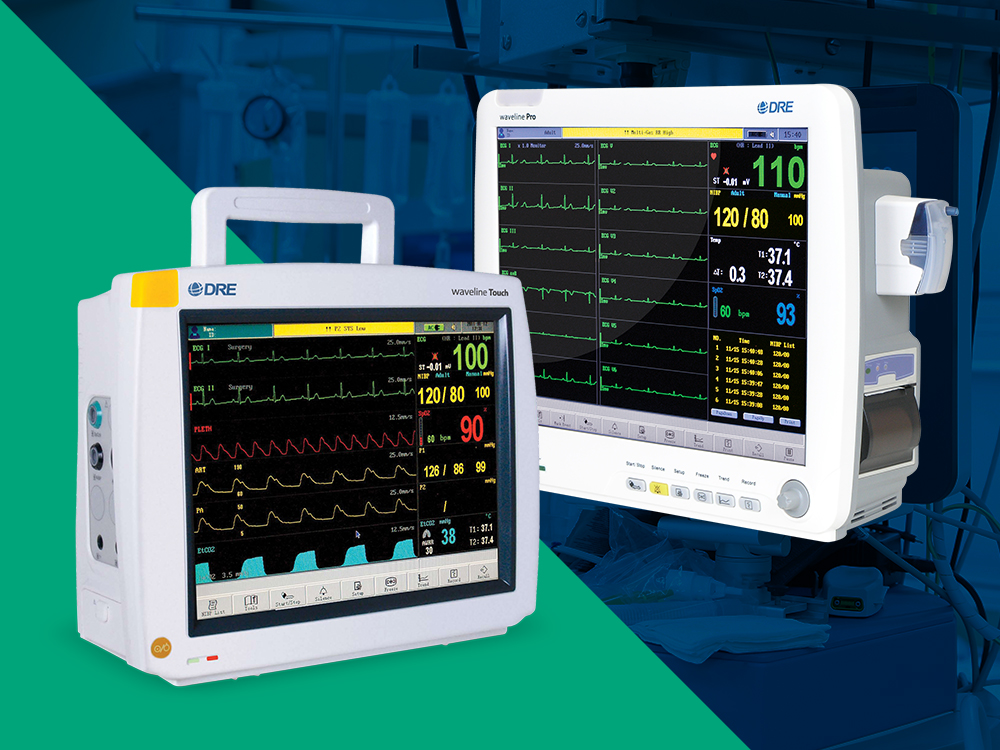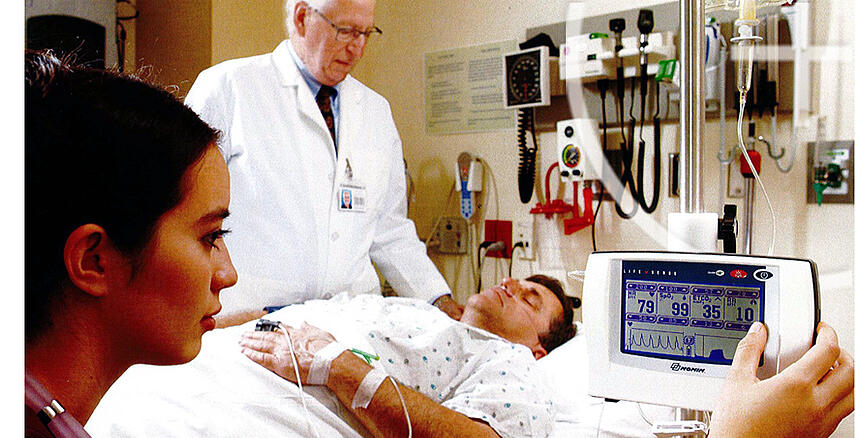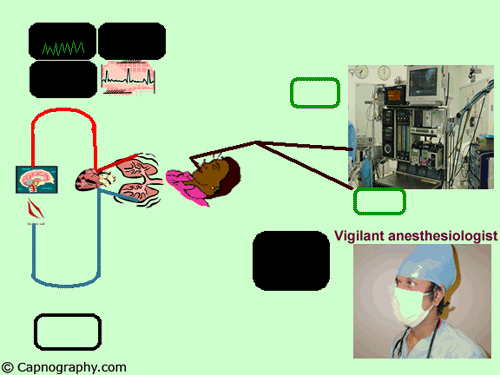end-tidal co2 monitoring standard of care
End-tidal carbon dioxide detection is the most accurate technology to evaluate endotracheal tube posi-tion in patients who have adequate tissue perfusion. Despite the majority of literature being case series expert opinion would suggest.

Capnography Vs Spo2 The Difference Could Be Life Changing
It became effective as of July.

. In the current New Jersey Standards for Hospital Facilities with which hospitals must comply on pain of losing their licenses one finds the following in the section on anesthesia supplies and equipment. Reprinted with permission from Kugelman A Zeiger-Aginsky D Bader D Shoris I Riskin A. The American Society of Anesthesiologists Task Force on moderate PSA recommends continuous monitoring and recording of the level of consciousness ventilation and oxygenation as well as hemodynamic parameters by an additional person responsible for patient monitoring.
Comparison with arterial CO2 and with proximal mainstream end-tidal. For this reason capnography is currently the most widely recommended method for monitoring ETCO258. Standard for every patient receiving general anesthesia.
B Bland Altman plot of the difference between Pa co 2 and proximal mainstream end-tidal carbon dioxide petco 2. Nurses completed 2 assessments of confidence in readiness for discharge before and after etCO 2. Continuous assessment of correct endotra-.
Airway pressure tidal volume and respiratory rate must also be monitored when the lungs are mechanically ventilated. Use of heart rate electrocardiography noninvasive and arterial blood pressure atrial pressure pulse oximetry and end-tidal carbon dioxide monitoring in the pediatric critical care unit is commonplace. End-tidal CO2 monitors can give healthcare providers an early warning if a patient is experiencing respiratory distress or going into respiratory failure.
End-tidal CO2 monitoring allows for almost immediate information about what is going on with a patient. In this study the aim was to review the applications of end-tidal carbon dioxide ETCO2 monitoring in emergency department multiple databases were comprehensively searched with combination of following keywords. In fact its commonly called the ventilation vital sign.
This practice however is not supported by well-controlled clinical trials. Prospective cross-sectional comparative one-group pre-post design. Understand how capnography or end tidal CO2 helps to monitor integrity of airway cardiac output and CO2 production during anesthesia ACLS sedation emergency medicine prehospital arena intensive care units trauma and assess functionality of breathing circuits and ventilators.
However ETCO2 may be underused in the PED setting. Identification of expired CO2 to verify correct positioning of an endotracheal tube or laryngeal mask. After profound circulatory collapse the end tidal CO2.
11 End Tidal CO2 monitoring ETCO2 via waveform capnography should be used to confirming correct placement of the endotracheal tube andor measure the adequacy of ventilation 12 For patients in cardiac arrest end tidal CO2 is a useful adjunct to treatment 121 Note. By monitoring the CO2 coming from the lungs we can not only confirm placement of an endotracheal tube after intubation but using new technology with real-time electronic monitoring we can determine the levels of CO2 with each breath. End-tidal carbon dioxide monitoring refers to the noninvasive measurement of exhaled carbon dioxide and is most useful when applied directly to patient care.
Quantitative End-tidal CO2 has quickly become the standard of care for monitoring the efficiency of CPR. This eliminates the need to wait for blood work chest-x-rays and other diagnostic tests. 2 End-tidal carbon dioxide by mainstream as well as side-stream capnography is a standard of.
End-tidal carbon dioxide ETCO2 is the level of carbon dioxide that is released at the end of an exhaled breath. CO2 monitors measure gas concentration or partial pressure using one of two configurations either. ETCO2 levels reflect the adequacy with which carbon dioxide CO2 is carried in the blood back to the lungs and exhaled.
Properly placed endotracheal tubes may become displaced due to movement of patients andor equipment. If the patient has a tracheal tube or supraglottic airway in situ endtidal carbon dioxide should be monitored continuously. The 2010 House of Delegates of the American Society of Anesthesiologists ASA amended its Standards for Basic Anesthetic Monitoring to include mandatory exhaled end-tidal carbon dioxide E t CO 2 monitoring during both moderate and deep sedation to its existing requirement for endotracheal and laryngeal mask airway general anesthesia.
ETCO2 emergency department monitoring and critical. End-tidal CO2 may be useful here as an easily and immediately measurable index of changes in cardiac output. An increase in etCO2 by 5 appears to have reasonable sensitivity 71-91 and specificity 94-100 for fluid responsiveness in two studies of patients breathing passively on the ventilator.
Ventilation effective movement of gas in and out of the lungs. When capnography or capnometry is utilized the end tidal CO2 alarm shall be audible to the anesthesiologist or the anesthesia care team personnel When ventilation is controlled by a mechanical ventilator there shall be in continuous use a device that is capable of detecting disconnection of components of the breathing system. Also called capnometry or capnography this noninvasive technique provides a breath-by-breath analysis and a continuous recording of ventilatory status.
Measurement of end-tidal CO2 therefore requires. To determine if end-tidal carbon dioxide etCO 2 value increased nurses perceptions of confidence in patients readiness for postanesthesia care unit PACU discharge. Continual monitoring for the presence of expired carbon dioxide.
End-tidal CO2 ETCO2 monitoring is not a new modality in the pediatric emergency department PED and emergency department. Venous return CO2 from tissue to heart. Capnography for monitoring ventilation - 2011.
With continuous technologic advancements EtCO 2 monitoring has become a key component in the advancement of patient safety within anesthesiology and the American Society of Anesthesiologists ASA has endorsed end-tidal capnography as a standard of care for general anesthesia and moderate or deep procedural sedation. End-tidal carbon dioxide monitoring shall be performed continuously on all patients receiving general anesthesia. Capnograph is an indispensable tool for monitoring metabolic and respiratory function.
A novel method of distal end-tidal CO2 capnography in intubated infants. The Philips monitor should automatically sense the End Tidal CO2 module and an End Tidal CO2 warming up message will be display in the top left hand side of the monitor. It is the standard of care during certain procedures such as intubations and sedations and can be used in variety of clinical situations.
End-tidal carbon dioxide ETco 2 monitoring provides valuable information about CO 2 production and clearance ventilation. Pulmonary blood flow CO2 from lungs to heart.

Pin By Shanghai Jaqi Medical On Multi Parameter Patient Monitor Medical Hospital Furniture Medical Equipment

Waveform Capnography In The Intubated Patient Emcrit Project

Do You Have Etco2 Monitoring When Performing Procedural Sedation Vital Care Products

Etco2 Patient Monitor End Tidal Co2 Patient Monitor All Medical Device Manufacturers

Handheld Vital Signs Monitor Vital Signs Monitor Vital Signs Pulse Oximeter

Pin On Soma Tech Intl Medical Equipment Rentals

Masimo Rad 97 Pulse Co Oximeter Health Device Medical Design Medical Device

Mindray Accutorr 7 Vital Signs Monitor Vital Signs Monitor Vital Signs Monitor

Standard Six Paremater Icu Monitor Ibp And Etco2 Optional Medical Medical Equipment Icu

A Systematic Approach To Capnography Waveforms Jems Ems Emergency Medical Services Training Paramedic Emt News

8inch Unique Design Patient Monitor Model Md908 Thermal Printer Unique Designs Design

End Tidal Capnography Periprocedural Care Patient Education And Consent Equipment Patient Preparation





